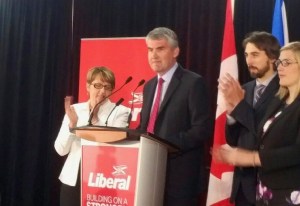
Did you know that, as of Friday morning, the Nova Scotia Health Authority’s News website was reporting a full computer page — 10 different items — flagging current, ongoing, never-ending emergency room closures in Nova Scotia?
From the Lillian Fraser Memorial in Tatamagouche, to the Eastern Shore Memorial in Sheet Harbour, to Guysborough Memorial, to the New Waterford Consolidated in Cape Breton… In several cases, those closures are expected to remain in effect until at least Aug. 18.
The previous weekend — the holiday weekend — the list was just as long, and included Shelburne where the local emergency room that serves the region’s 14,000 residents was scheduled to be unstaffed for 104 hours, meaning anyone with a medical emergency would have to travel 40 minutes to an hour to find help.
“We have the right to access health care,” Shelburne Mayor Karen Mattatall pointed out to CTV. “Every Canadian is guaranteed that in the Canada Health Act.” But a guaranteed right without any opportunity to access it isn’t much of a guaranteed right at all.
You may not need a Google search to understand that Nova Scotia’s healthcare system is in crisis, but it’s probably worth a quick sampler just to remind ourselves of how egregious the mess has become on so many different health related fronts…
- July 10. Nova Scotia adds 10 residency spaces for medical students. “I think that will do wonders for our recruitment over the near and long term,” touted Health Minister Randy Delorey. He was, to be clear, talking about the possibility of a drop-in-the-bucket 10 new residency spaces. Less than a month later — thanks to an international kerfuffle not of the province’s making and out of its solution — it turns out we may actually lose more than 50 Saudi Arabian medical residents studying and working here because of a diplomatic spat between Ottawa and Saudi Arabia. Responded our Everything’s-Dandy Randy: Losing the Saudi residents, he said, might be “possibly linked to some inconveniences.” You think?
- July 27. “‘The suffering is getting worse’: N.S. doctor speaks out about ‘critical’ situation at hospitals. Brian Ferguson, a veteran Amherst physician, told Global News: “We’re down to critical staff right now. We lose one more specialist, we lose one more GP, we’re done.” According to the latest stats, 52,000 Nova Scotians remain stuck in waiting list limbo “actively seeking” a doctor.
- August 8. “Nova Scotia orders EHS review as paramedics’ work concerns continue,” the CBC reported. The union representing paramedics had released data showing “increasing numbers of ambulances are either out of service or not fully staffed,” creating problems of “paramedics not getting enough rest between shifts to be able to answer backfill requests, or feeling burned out and not wanting extra shifts.” Explained union spokesperson Terry Chapman: “This is a systemic breakdown of the system and every system needs to be evaluated.” Responded Everything’s-Dandy Delorey of his new review: “We want to know, with an outside set of eyes… ‘These are the things that are working really well, these are opportunities to possibly change, tweak, make [things] better.’” Uh…OK.
- August 9. “Doctor leaving Chester, but replacement can’t take old patients on.” In one of those you-can’t-get-there-from-here stories, the Chronicle Herald reported a local doctor who was leaving town had instructed her patients “to connect with Nova Scotia Health Authority to get on the physician wait list,” even though she was being replaced by another doctor. Apparently, that’s just the way the system works. The McNeil government, you may remember, amalgamated the province’s regional health authorities into one all-knowing, all-powerful Nova Scotia Health Authority to make health care delivery more efficient and effective. Here’s how Shelburne’s mayor (see above) responded to that: “The last time things really worked well was when the decision-making was local…. We hear lots of things from [the NSHA] about why things aren’t working. Um. They’re not working. And they need to be fixed.”
- August 10. Freelance journalist and author Bill Turpin, who has been tracking the issue of the lack of family doctors in his TURPINLABS blog, noted nothing much had changed from the previous month — “just another increase of a few per cent.” But then he added, “it’s like compound interest on credit card debt. Everything seems OK until one day you’re in too deep. As so we’ve gone from 41,877 people needing a family doctor in January to 54,915 today. That’s six per cent the population. By way of perspective, most of us would be thrilled with a six per cent return on our savings. In pre-election polls, six per cent can mean a lock on victory.”
- July 26. Oh, yes, and then there was this semi-unrelated but germane report: “Nova Scotia announces $120-million surplus…” “With $230-million to work with,” asked Tory house leader Chris d’Entremont, “what other investments could government have done when we are looking at a doctor crisis?” Suggested NDP leader Gary Burill: “We could have opened up a lot of nursing homes if we had taken this kind of a surplus and moved it toward this kind of investment.”
The problem clearly isn’t that we don’t know there’s a problem. We do. Many and various problems. And so does the government.

In 2017, Stephen McNeil’s Liberals came within a few hundred votes here and there of losing its electoral majority, mostly because so many Nova Scotians were unhappy with healthcare. “I want to assure you that I’ve heard you, and I’ve listened,” McNeil said on election night. “We have a plan, and the opposition parties have a plan, and we can work together to make it better.”
So much for working together. With the opposition. Or, more importantly, with Nova Scotians.
In late June, the premier was greeted by raucous heckling when he traveled to Cape Breton to announce the closure of two hospitals in North Sydney and New Waterford. The reality is the decision may have been necessary and may ultimately contribute to better care. The aging hospitals will be replaced by two new community health centres and a long-term care facility. The Nova Scotia Nurses Union said it was “cautiously optimistic” the decision will improve health care there, and a longtime cardiologist called it “very exciting for my department, for critical care, that we’re going to improve the way we manage patients in Cape Breton.”
So why did the premier get booed?
Because his government doesn’t consult, doesn’t explain, doesn’t listen.
If there is a plan to tackle the many and varied, and admittedly complex, health care issues we face, or to address the other factors — geography, demography, etc. — that exacerbate those problems, it isn’t apparent. Mostly, this government seems to careen from one crisis to another, slapping bandaids on gusher wounds, pronouncing, “Problem SOLVED” and moving on.
We could use a government with a sense of urgency, a willingness both to confront the real issues and also to consult with Nova Scotians about the tough choices we will need to make, a government with a sense of mission about creating long-term sustainable solutions… In short, we could use some leadership.
Do we have that? Can this government provide that? Questions worth asking ourselves.
A version of this column originally appeared in the Halifax Examiner. To read the latest column, please subscribe.




 STEPHEN KIMBER, a Professor of Journalism at the University of King's College in Halifax and co-founder of its MFA in Creative Nonfiction Program, is an award-winning writer, editor and broadcaster. He is the author of two novels and eight non-fiction books. Buy his books
STEPHEN KIMBER, a Professor of Journalism at the University of King's College in Halifax and co-founder of its MFA in Creative Nonfiction Program, is an award-winning writer, editor and broadcaster. He is the author of two novels and eight non-fiction books. Buy his books
government spends so much money on ways to remain unaccountable ,, because they are, at the majority, incompetent .. I will confess to this being a fairly un-researched viewpoint but I would ask why, for example, they can’t take money from their press budgets for health care .. self preservation .. keep that good ole’ government job .. regardless of qualifications .. ??